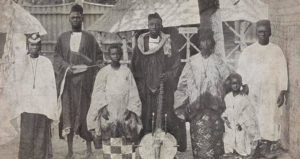As part of mammoth celebrations of the 200th anniversary of Norway’s constitution, the government there is funding two artists to re-enact a human zoo that will open to the public on May 15.
Oslo’s original human zoo or “Kongolandsbyen” was central to Norway’s World Fair in 1914. The artists claim that the project, which they named ‘European Attraction Limited‘, is meant to provoke a discussion on colonialism and racism in a post-modern world, engaging with Norway’s racist past in the process.
Some anti-racism organizations and commentators have labeled the project offensive and racist. ThisisAfrica.com asks, is there any artistic value in the re-enactment of such a dehumanizing spectacle, especially in a world not yet fully healed of racism? Is this an abuse of art? Won’t the re-enactment reverse the modest gains of the equality struggles, especially in a world that superficially engages the subject of race?
Norway’s 1914 human zoo is not a widely known historical event in the country, or the world. But, for five months, 80 people of African origin (Senegalese) lived in “the Congo village” in Oslo, surrounded by “indigenous African artifacts.”
More than half of the Norwegian population at the time paid to visit the exhibition and gawp at the “traditionally dressed Africans,” living in palm-roof cabins and going about their daily routine of cooking, eating and making handicrafts. The king of Norway officiated at the opening of the exhibition.
There were several human zoos or “colonial exhibitions” in Belgium, Germany, France, the U.S. and other Western countries at the time, exhibiting Africans and other non-Western peoples. These helped convince the European public opinion of the necessity of colonization. Exhibiting Africans as animals, uncivilized, primitive, animistic helped to justify colonization.
It was also a source of entertainment for the European of the time, to see how “backward” Africans were. Indeed, after the Norwegian show, Urd, a Norwegian magazine concluded; “it’s wonderful that we are white.”
In Belgium, 267 Congolese who were being exhibited died during the show, and were unceremoniously buried in an anonymous common grave. The whole spectacle denied Africans any human dignity. They were treated as animals. The zoos reinforced the feel-good, self-congratulatory mood prevalent then among Europeans, who considered themselves the most advanced society in the world, far above the rest of the world.
Muauke B Munfocol, originally from DR Congo and living in Norway, thinks that the project does not “serve as a moment of collective introspection of the still existing but unrecognized racial order and systems of privilege in the country.”
Instead, she says: “One might wonder why at such a time, rather than putting its efforts to acknowledge the existence of racism, paying reparations, and changing the historical-political and cultural relationship to other non-white countries, the Norwegian government chooses to finance a project that reaffirms their part in a global white domination system where Black people are dehumanized spiritually, economically, socially and culturally.”
Read the full story by Bwesigye bwa Mwesigire at thisisafrica.me



